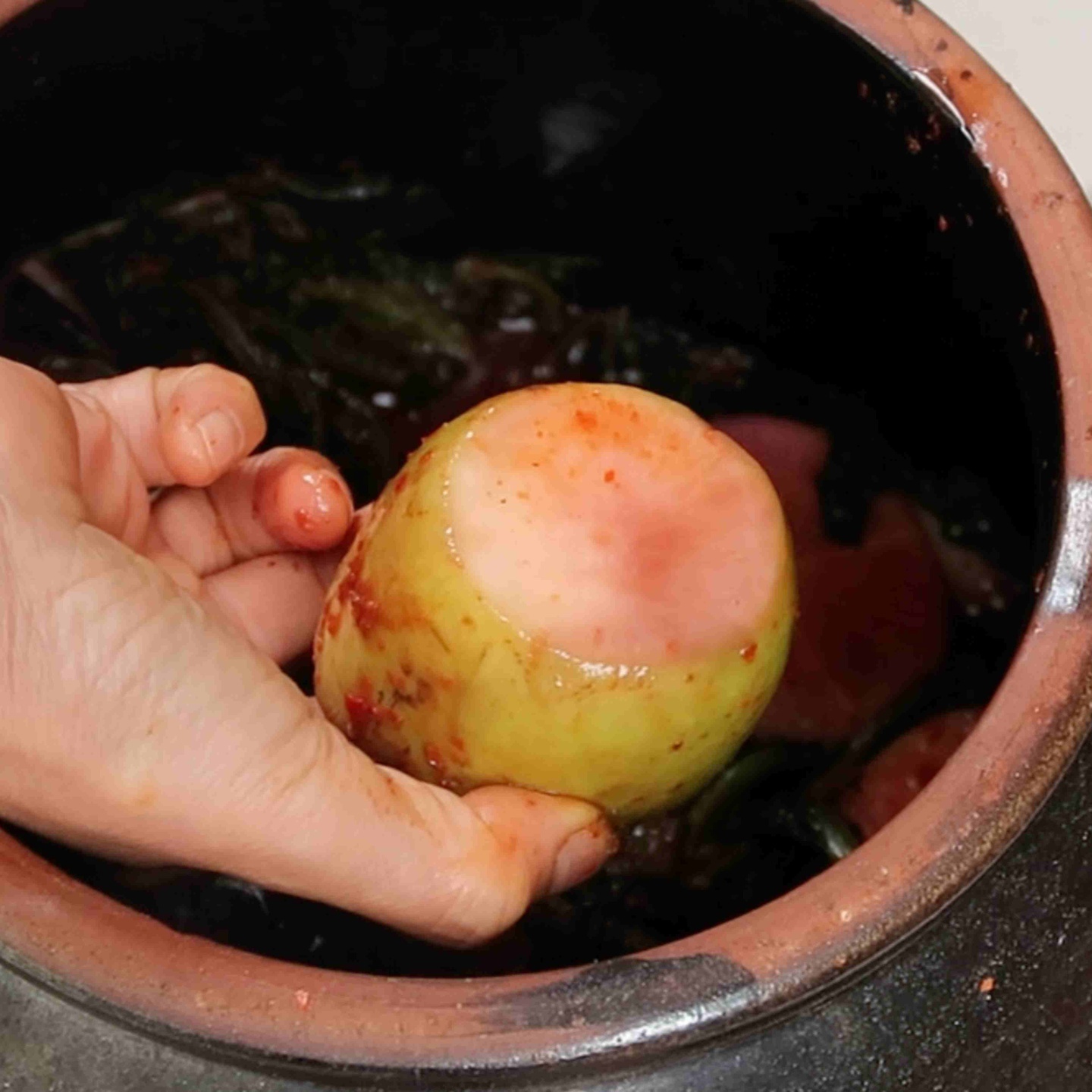Jjigae (찌개)
Jjigae is a type of Korean soup that places a stronger emphasis on the ingredients in the soup. It is thicker like a stew in comparison to other Korean soups, which contain more broth or liquid. Because these soups are usually hearty and filling they are often enjoyed for lunch or dinner.
Jjigae is usually named after the main ingredient present in the soup, like soft tofu (순두부) or Kimchi (김치). For example, Kimchi Jjigae (김치찌개) is a thicker stew-like Korean soup that has Kimchi as the main ingredient.
Jjigae is usually served in a Tteokbaegi at Korean restaurants. As you know, this bowl keeps the Jjigae super hot and still simmering as it is brought to the table. When it comes to Jjigae, this type of soup is usually served in one bowl that is shared by everyone at the table but it can vary based on restaurant.
Jeongol (전골)
Jeongol originates from a dish called Sinseollo (신선로), which was part of Korean royal court cuisine. Traditionally, it was made by adding stock to seasoned meat, vegetables, and fruits in a special Korean pot.
Today, Jeongol can be classified similarly to hot pot because of how it is served and eaten. Jeongol is made by adding various vegetables, meat, and seasoning to a pot with broth. There are so many varieties of this soup, and the flavors can vary from spicy to mild.
This dish is usually served in a shallow pot with all the raw ingredients inside with broth. It is then placed on a burner in the center of the table and simmered till cooked. This dish is then shared by everyone at the table.
Guk (국) & Tang (탕)
Guk and Tang are similar. The term “탕” is based on the Korean pronunciation of the Chinese character used for Guk. That may seem confusing, but basically, Guk and Tang are essentially the same things; their names just have different origins.
Guk and tang dishes have a stronger emphasis on broth. Guks and Tangs usually contain a larger amount of broth compared to the ingredients in the soup.
The broths used to make this soup can vary from a spicy broth to a savory milky bone broth or a clear seaweed or anchovy broth. They can also contain different proteins like fish, beef, or pork and a variety of vegetables like seaweed, green onion, or bean sprouts.
These soups are usually very warming and refreshing and since they are “lighter” than other categories of soup, they can be enjoyed for breakfast.
Unlike the usual setup, where you are given a large soup portion that is shared with everyone at the table. Guk and tang are usually served in individual bowls, which come to each person piping hot and boiling.
The general soup category of Guk (국) can be broken down into more categories. In Korean cuisine soups and stews can be enjoyed at any time of the day and during any occasion. Soups are a huge part of the everyday typical home meal in Korean cuisine. Sometimes types of soups like Guk (국) are preferred for breakfast but really they are eaten at all times of the day, there are no strict rules.
Haejang-guk (해장국) or Sulguk (술국)
Haejang-guk (해장국) refers to a soup that is enjoyed after a night of drinking to replenish and help people to recover from their hangover.
Any kind of soup can be eaten after a hangover there are no strict categorizations. However, soups that are specifically called Haejang-guk (해장국) usually contain ingredients that can help to facilitate the aldh process which can make people feel better after drinking. Aldh is an enzyme that helps to break apart and remove the alcohol molecule. Some examples of ingredients that you will find in Haejang-guk (해장국) that help with hangovers are dried pollock (황태), bean sprouts (콩나물), or dried outer radish leaves (우거지).
Sulguk (술국) refers to a soup that is enjoyed with alcohol. Any soup can really fall under this category.
Gukbap (국밥)
Gukbap is a soup that is served with rice. That rice can be served on the side or in the soup; the way the rice is served varies.
Besides rice, Gukbap can contain broth, seasonal and local vegetables, and or proteins. It is usually named after the main ingredient in the soup. For example, if it contains beef, it would be called beef gukbap (소고기국밥).
Historically, the ingredients in gukbap were cooked separately and then added together in the broth and simmered, now, it varies based on region and restaurant. Gukbap is usually served with chives, a seasoned salted shrimp sauce, red pepper powder, or a red pepper powder-based paste on the side.
The Process of “토렴”
Usually, good quality cooked white rice is used in Gukbap.
There is a method called 토렴 that is used when rice is added to the Gukbap and then served:
- First, cooked rice is portioned into serving bowls and left to cool completely.
- Once it is time to serve the Gukbap, the broth is added to the bowl with the rice in a specific way. Broth is gradually added to the rice, then strained back into the pot. This process is done about 3 times until the rice is completely reheated. Once the rice is completely heated, the soup is added again to the rice for a final time and served.
The reason cold rice is used is because cold rice contains beta starch. Beta starch absorbs water molecules really well. Therefore, cold rice will absorb the broth’s flavor better and be well seasoned. Cold rice will also have a better texture when reheated using this method in comparison to hot rice. If you use hot rice with this method, then it would get mushy and not absorb the broth’s flavors as well as if cold rice was used.

